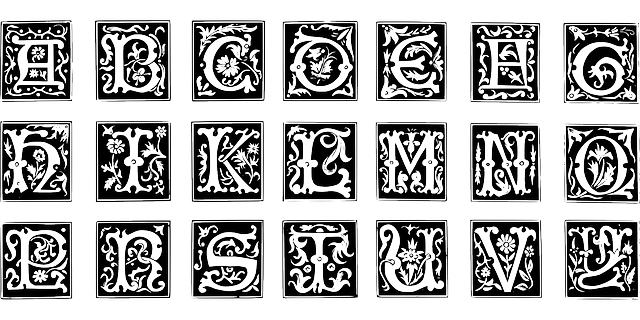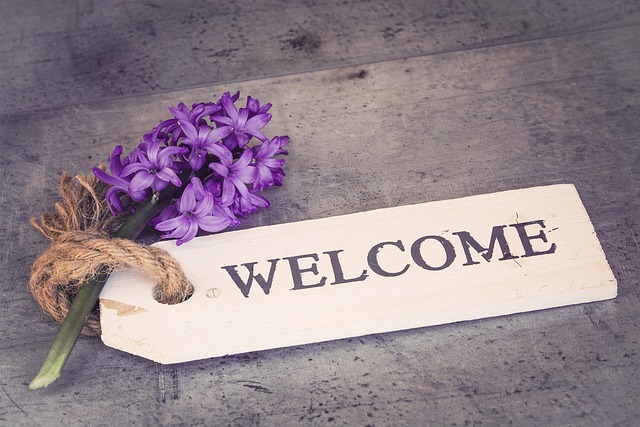Are you tired of plain, ordinary handwriting? Do you want to add a touch of personalization and style to your name? Look no further! In this article, we will guide you through the art of writing a name in block letters – a trendy and eye-catching technique that is sure to impress. Whether you’re creating a unique signature or adding flair to your artwork, we’ve got you covered. Let’s discover the secrets to mastering block letters and find out how you can infuse your name with a stylish touch that truly represents your individuality. So grab a pen, and let’s get started on the exciting journey of artistic personalization!
Contents
- Choosing the Right Materials for Block Lettering
- Understanding the Basic Techniques of Block Lettering
- Adding Personalization: Creative Touches and Flourishes
- Enhancing Block Letters through Colors and Shading
- Exploring Different Styles of Block Lettering
- Achieving a Polished and Professional Look
- Tips for Practicing and Mastering Block Lettering Skills
- Frequently Asked Questions
- Future Outlook
Choosing the Right Materials for Block Lettering
When it comes to block lettering, choosing the right materials is crucial to achieve the desired effect. Whether you’re a beginner or an experienced artist, considering the following factors can help you create stunning block letter art.
1. Outline pens: When outlining your block letters, opt for fine-tipped pens that provide precision and control. Sakura Pigma Micron pens or Faber-Castell Pitt Artist pens are great options. These pens have archival ink, ensuring that your artwork will remain vibrant for years to come.
2. Paper selection: Choosing the right paper is essential for achieving clean lines and preventing bleed-through. Consider using marker paper, which has a smooth surface that helps the ink flow smoothly. Alternatively, you can try Bristol board or heavy-weight sketch paper for added durability.
3. Lettering guides: If you’re new to block lettering, consider using lettering guides to maintain consistency and perfect your technique. These guides are available in various styles and sizes, such as geometric shapes or stencils, and can be easily placed under your paper to trace the outline.
4. Colored markers: To add depth and vibrancy to your block lettering, experiment with colored markers. Tombow Dual Brush pens offer a wide range of colors and have a flexible brush tip, perfect for creating both bold and fine lines. Alternatively, Copic markers provide a vast color selection and are known for their high-quality ink.
Remember, selecting the right materials that suit your personal style and preferences is essential. Consider trying out different combinations to find what works best for you. With practice and experimentation, you’ll be on your way to creating mesmerizing block letter artwork.
Understanding the Basic Techniques of Block Lettering
Block lettering, often referred to as block fonts or block capitals, is a popular technique used in typography and design. It involves creating bold, clear letters that are formed by straight lines and right angles. This style of lettering is widely used for headlines, signage, posters, and even in some logo designs. By mastering the basic techniques of block lettering, you can add a professional and standout touch to your designs.
One of the fundamental aspects of block lettering is consistency. To achieve this, make sure all the letters have the same height and width. This can be done by using guidelines or grids to ensure uniformity. Another technique to keep in mind is to create straight lines by using a ruler or a T-square. This will help you achieve the clean, geometric look that is characteristic of block lettering. Experimenting with different line weights can also add dimension to your letters, making them visually interesting. Remember to use heavier lines for the outer edges and thinner lines for the inner details of the letters.
Adding Personalization: Creative Touches and Flourishes
Personalizing your content can add a touch of creativity and uniqueness, making it stand out from the crowd. With a few simple flourishes, you can make your content more engaging and memorable for your audience. Here are some creative ways to add that personal touch:
1. Visual Appeal: Incorporate eye-catching visuals such as images, illustrations, or videos that resonate with your message. These visuals can help convey your ideas effectively and leave a lasting impression.
2. Storytelling: Weave compelling narratives into your content to captivate your readers. Stories have a way of connecting emotionally with people, so consider sharing relevant anecdotes, case studies, or personal experiences that add depth and authenticity to your writing.
3. Quotations: Include inspiring or thought-provoking quotes from industry experts, well-known figures, or even your own experiences. These snippets can provide valuable insights and lend credibility to your content.
4. Humor: A well-placed joke or humorous comment can instantly lighten the mood and make your content more enjoyable to read. However, be mindful of your audience and ensure the humor aligns with your overall tone and message.
5. Interactive Elements: Engage your readers further by incorporating interactive elements like polls, quizzes, or surveys. This not only adds a fun factor but also encourages active participation from your audience.
Adding personalization can breathe life into your content, making it more engaging and resonant with your target audience. Whether it’s through captivating visuals, compelling storytelling, inspiring quotes, a dash of humor, or interactive elements – these creative touches and flourishes will leave a lasting impact on your readers and set your content apart from the rest. So, don’t be afraid to infuse your personality into your writing and make it truly unique!
Enhancing Block Letters through Colors and Shading
Enhancing block letters with colors and shading can bring a whole new level of creativity and visual appeal to your designs. By adding vibrant hues and subtle shadows, you can make your block letters really pop and stand out on any page. Here are some tips and tricks to help you master the art of coloring and shading block letters:
1. Choose the right color palette: Experiment with different color combinations to find the perfect one that complements your overall design. Consider contrasting colors for a bold look or analogous colors for a more harmonious feel. Play around with shades and tints to create depth and dimension.
2. Use shading techniques: Shading can add depth and a three-dimensional effect to your block letters. Start by determining the light source and create shadows accordingly. Use a light touch to gradually darken areas that are farther away from the light source. You can easily achieve shading effects by blending pencil strokes, using digital brushes, or even adding gradients in your design software.
3. Emphasize certain areas: Highlighting specific parts of your block letters can add visual interest and make them even more appealing. You can accomplish this by adding a contrasting color or using a brighter shade to draw attention to particular parts of the letter. Experiment with different styles such as adding a gradient fill or using a semi-transparent overlay.
4. Don’t forget about texture: Consider incorporating textures into your block letters for an extra touch of creativity. Think about using patterns, gradients, or even images that suit your design. Textures can add depth and make your block letters look more realistic and captivating.
So, get ready to take your block letter designs to the next level by incorporating vibrant colors and shading techniques. With a little practice and experimentation, you’ll be amazed at how your block letters come to life with a fresh and visually appealing look. Happy designing!
Exploring Different Styles of Block Lettering
Block lettering, also known as block fonts or square lettering, is a popular style that is widely used in signage, posters, and graphic design. Its simplicity and boldness make it easily legible and eye-catching. There are various styles of block lettering that add a unique touch to any design. Let’s explore some of these styles and see how they can enhance your creative projects!
1. Urban Block: This style takes inspiration from street art and graffiti, incorporating angular shapes and bold lines. It adds a dynamic and edgy feel to your designs, perfect for capturing attention in urban-themed projects.
2. Retro Block: Looking to give a vintage vibe to your designs? Retro block lettering is the way to go! This style is characterized by bold, thick letters with rounded edges and a slightly faded effect. It’s ideal for nostalgic projects or anything that needs a touch of old-school charm.
3. Stacked Block: If you’re looking to create a clean and modern look, stacked block lettering is a great option. As the name suggests, the letters are stacked on top of each other, giving a structured and organized effect. This style works well in minimalistic designs or when you want to convey a sense of professionalism.
4. Graffiti Block: For a more artistic and expressive approach, try incorporating graffiti-inspired block lettering into your designs. This style is characterized by exaggerated proportions, intricate details, and vibrant colors. It adds a rebellious and free-spirited touch to your projects, making them visually striking and impactful.
5. Fun and Whimsical Block: Sometimes, you need a playful and lighthearted style to bring your designs to life. Fun and whimsical block lettering does just that! With its exaggerated shapes, bubbly letters, and colorful accents, this style is perfect for children’s books, invitations, or any project that calls for a dose of joy and imagination.
So, as you can see, there are endless possibilities when it comes to . Don’t be afraid to experiment and mix these styles to create your own unique lettering that suits your project’s needs. Whether you’re going for a bold and urban look or a vintage and nostalgic feel, block lettering offers versatility and impact that will captivate your audience.
Achieving a Polished and Professional Look
When it comes to making a lasting impression in any professional setting, your appearance plays a vital role. Dressing appropriately can help you exude confidence, credibility, and competence. Here are some key tips to help you achieve a polished and professional look:
- Invest in quality clothing: Opt for well-constructed garments made from high-quality materials. They tend to fit better and last longer, giving you a polished appearance.
- Stick to classic styles: Classic looks never go out of fashion. Timeless pieces like a tailored suit or a little black dress can instantly elevate your professional image.
- Pay attention to fit: Ill-fitting clothes can make you look sloppy or unprofessional. Ensure that your clothes are well-tailored to your body shape, highlighting your best features.
In addition to clothing, paying attention to grooming and personal care is equally important. Here are a few grooming tips to help you complete your professional look:
- Maintain a clean and tidy appearance: Regularly grooming yourself, including keeping your hair well-styled, maintaining well-trimmed nails, and having fresh breath, will contribute to a polished appearance.
- Ensure proper hygiene: Good personal hygiene practices, such as regular showers, wearing clean clothes, and using antiperspirant, should be a priority.
- Keep accessories minimal and tasteful: Accessories, like jewelry or watches, can add a touch of sophistication to your overall look. However, it’s crucial not to overdo it. Choose simple and elegant pieces that complement your outfit without being distracting.
Tips for Practicing and Mastering Block Lettering Skills
Block lettering is a beautiful and versatile form of hand lettering that can add a unique touch to any project. Whether you’re just starting out or looking to improve your skills, here are some helpful tips to practice and master block lettering:
1. Start with the basics: Begin by familiarizing yourself with the different styles of block lettering. Explore various fonts and letterforms to get a sense of their structure and proportions. This will help you develop a solid foundation for your own creations.
2. Practice consistently: Like any skill, block lettering requires regular practice to improve and refine your technique. Set aside dedicated time each day or week to practice your lettering. Consider creating a schedule or joining a lettering challenge to keep yourself motivated.
3. Focus on letter spacing: Pay close attention to the spacing between each letter. Consistent spacing is key to achieving a professional-looking design. Experiment with different spacing techniques, such as making the spaces between the letters equal or using kerning to adjust spacing between specific letter pairs.
4. Experiment with different tools: While many people start with traditional pen and paper for block lettering, don’t be afraid to explore different tools and materials. Try using markers, brush pens, or even digital software to create your lettering. Each tool offers a unique effect and can help you discover new possibilities.
5. Study and analyze: Take the time to study and analyze block lettering examples created by other artists. Observe their consistency, form, and unique stylistic choices. This will inspire you and help you develop your own personal style.
Remember, mastering block lettering takes time and dedication. Embrace the learning process and enjoy experimenting with different techniques and styles. With practice and patience, you’ll soon become a confident block lettering artist.
Frequently Asked Questions
Q: Why should I learn to write in block letters?
A: Learning to write in block letters allows for clear and legible communication. It adds a stylish touch to personalization, making it visually appealing.
Q: What are some benefits of writing in block letters?
A: Block letters are easier to read compared to cursive writing. They create a uniform, professional appearance and are highly preferred for signage, posters, presentations, and personal projects.
Q: Where can block lettering be applied?
A: Block lettering finds its application in various areas, including art and design, advertisement, graffiti, logo creation, handwriting practice, and even simply writing one’s name for a personal touch.
Q: How do I get started with writing in block letters?
A: To begin, find the right writing tools, like markers or pens with a broad tip, providing clean and bold lines. Then, experiment with different styles and sizes of block letters that suit your personal preference.
Q: What are some key factors to consider when writing in block letters?
A: Focus on the consistent thickness of your lines, aiming for even spacing between each letter. Maintaining straight lines and sharp angles will contribute to the overall neatness and professionalism of your writing.
Q: Are there any specific techniques to create stylish block letters?
A: Absolutely! You can experiment with adding embellishments, shadows, or outlines to your letters. Playing with different styles like bubble letters, 3D block letters, or even graffiti-inspired designs can add a unique personal touch.
Q: How can I improve my block lettering skills?
A: Practice is key! The more you practice writing in block letters, the better your technique becomes. Don’t be afraid to use guidelines initially, and gradually build your confidence to freehand your lettering.
Q: Can block lettering be modified to suit my personal style?
A: Of course! Block lettering is highly versatile and offers room for creative expression. Feel free to experiment and incorporate your personal style into your writing, making it uniquely yours.
Q: Are there any online resources or tutorials available to help me learn block lettering?
A: Absolutely! There are numerous online resources, blogs, and video tutorials that provide step-by-step guidance for learning block lettering. These resources can help you understand different styles and techniques in a more visual and interactive way.
Q: What is the significance of block lettering in the modern age?
A: In an era dominated by digital communication, block lettering stands out as a captivating and attention-grabbing way to personalize and convey messages. It serves as a subtle reminder of the artistry and creativity that can be found in even the simplest forms of communication.
Future Outlook
In conclusion, mastering the art of writing names in block letters adds a touch of personalization and style to any project. So grab your pen and practice these techniques, and soon enough, you’ll be creating stunning, eye-catching designs!







